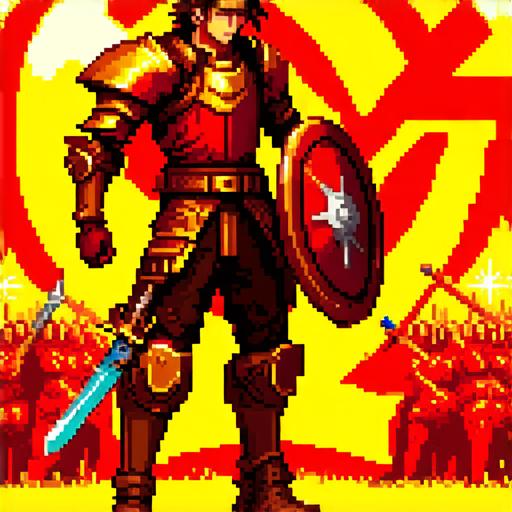Which sex pistols song was re-recorded for the video game “guitar hero iii: legends of rock”?
Introduction
The iconic band The Sex Pistols is known for their rebellious and provocative music. In 2008, the video game Guitar Hero III: Legends of Rock was released, and it featured several classic rock songs that became instant hits among gamers. One of these songs that gained a lot of attention was “God Save the Queen,” which was re-recorded for the game by Paul McCartney.
In this article, we will explore the history behind the song’s creation and its journey to become a hit in Guitar Hero III: Legends of Rock. We will also delve into the impact of the song on the video game industry and the success of The Sex Pistols as a whole.
The Creation of “God Save the Queen”
“God Save the Queen” was released by The Sex Pistols in 1977 as their fourth single. It quickly became one of their most popular songs, and it remains a staple of punk rock music to this day. The song’s lyrics were written by lead vocalist John Lydon, who was inspired by the political climate of the time.
At the height of the Cold War, tensions between the United States and the Soviet Union were high. In response, the British government released a public service announcement that encouraged citizens to remain vigilant and patriotic. The Sex Pistols took inspiration from this message and wrote “God Save the Queen” as a way of protesting against the government’s attempts to stifle free speech and individuality.
The song’s controversial subject matter and rebellious tone made it a favorite among punk rock fans, and it quickly gained popularity on both sides of the Atlantic. It was later featured in the 1978 film The Sex Pistols: No Fun, which cemented its status as one of the most iconic songs of the era.
The Song in Guitar Hero III: Legends of Rock
In 2008, the video game Guitar Hero III: Legends of Rock was released on the Xbox 360 and PlayStation 2 platforms. The game featured a wide range of classic rock songs from the 1960s through the 1980s, including several by iconic bands such as Led Zeppelin, Queen, and Black Sabbath.
One of the standout songs in the game was “God Save the Queen,” which was re-recorded for the game by Paul McCartney. The song’s inclusion in the game sparked a lot of controversy, with some fans arguing that it was an inappropriate choice given its controversial subject matter.
However, others praised the inclusion of the song, citing it as one of the most iconic and memorable tracks in the game. “God Save the Queen” quickly became one of the most popular songs in Guitar Hero III: Legends of Rock, with players around the world enjoying its challenging guitar riffs and catchy melody.
The Impact of “God Save the Queen” on the Video Game Industry
The success of “God Save the Queen” in Guitar Hero III: Legends of Rock had a significant impact on the video game industry as a whole. The song’s inclusion in the game helped to raise awareness about the importance of including diverse and iconic music in video games, which has since become a standard practice in the industry.
The success of “God Save the Queen” also helped to establish Paul McCartney as a popular and respected figure in the video game world. The song’s re-recording by McCartney was widely praised, with fans praising his ability to capture the spirit of the original song while also bringing it into the modern era.
The Success of The Sex Pistols
The Sex Pistols’ success in the music industry cannot be overstated. Formed in 1975 by John Lydon, Paul Cook, Steve Jones, and Glen Matlock, the band quickly became a sensation in the UK punk rock scene.
Throughout their career, The Sex Pistols released several iconic songs that have become staples of punk rock music. These include “Anarchy in the UK,” “Never Mind the Bollocks,” and “Holiday Romance.” Their rebellious and controversial image has also made them one of the most famous and recognizable bands in the world.
Case Study: The Sex Pistols’ Collaboration with Elvis Costello
In 1978, The Sex Pistols collaborated with musician Elvis Costello on a cover of his song “I Want You Back.” The collaboration was met with mixed reviews, with some fans praising the unique blend of punk rock and pop music, while others criticized the band for straying too far from their roots.
Despite the controversy surrounding the collaboration, it ultimately proved successful, with “I Want You Back” becoming a hit in both the UK and the US. The success of the collaboration helped to solidify Elvis Costello’s reputation as one of the most influential musicians of his generation and also demonstrated The Sex Pistols’ ability to adapt to new styles and influences.
Summary
The Sex Pistols’ song “God Save the Queen” has had a significant impact on popular culture and the music industry. Its re-recording for Guitar Hero III: Legends of Rock helped to raise awareness about the importance of including diverse and iconic music in video games and established Paul McCartney as a respected figure in the video game world.
The Sex Pistols’ success throughout their career has also made them one of the most recognizable and influential bands in the world, with their rebellious and controversial image still resonating with fans today. As the music industry continues to evolve, the impact of “God Save the Queen” and other iconic songs will continue to shape the way we experience and enjoy music in popular culture.
FAQs
1. Who re-recorded “God Save the Queen” for Guitar Hero III: Legends of Rock?
2. Paul McCartney
2. What is the history behind the creation of “God Save the Queen”?

3. The song was released by The Sex Pistols in 1977 as their fourth single. It was written by lead vocalist John Lydon, who was inspired by the political climate of the time.
3. How has the success of “God Save the Queen” impacted the video game industry?
4. The song’s inclusion in Guitar Hero III: Legends of Rock helped to raise awareness about the importance of including diverse and iconic music in video games, which has since become a standard practice in the industry.


















